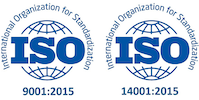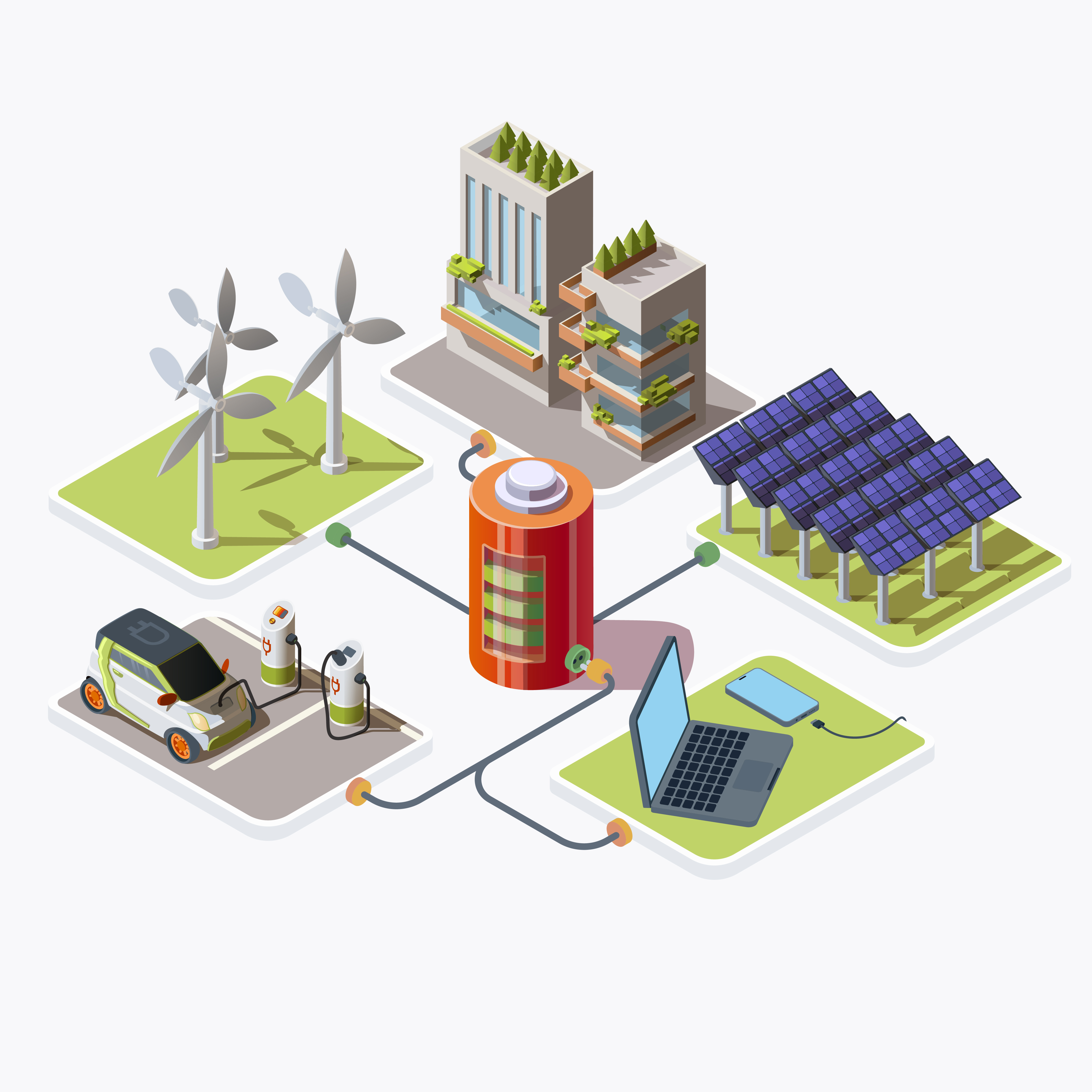Table of Contents
ToggleIntroduction:
Solar energy has emerged as a leading renewable energy source, offering sustainable solutions to our ever-growing energy needs. Central to harnessing solar power are solar panels, which come in various types, each with its own unique benefits and applications. Understanding the differences between these solar panels is crucial for making informed decisions about energy generation. In this article, we delve into the intricacies of different types of solar panels and explore their respective advantages, empowering you to make the right choice for your energy needs. Let’s embark on this enlightening journey into the world of solar panels and uncover the possibilities they hold for a brighter, cleaner future.
Monocrystalline Solar Panels
Monocrystalline solar panels are renowned for their efficiency and longevity, making them a popular choice for residential and commercial solar installations. Monocrystalline solar panels are manufactured from single-crystal silicon, which is grown in a controlled environment to form uniform, high-purity silicon ingots. These ingots are then sliced into thin wafers, which are used to create individual solar cells. Monocrystalline solar panels typically have a uniform black appearance due to their high purity silicon and are easily recognizable by their rounded edges.
Monocrystalline solar panels have the highest efficiency among all types of solar panels, typically ranging from 15% to 22%. This high efficiency means that monocrystalline panels can generate more electricity per square meter of space compared to other types of panels. Monocrystalline solar panels are known for their durability and long lifespan, often exceeding 25 years with proper maintenance. This longevity makes them a cost-effective investment for homeowners and businesses looking to generate clean energy over the long term.
Monocrystalline solar panels have a higher power output per square meter compared to other types of panels, making them ideal for installations with limited roof space or where maximizing energy production is a priority. Monocrystalline solar panels tend to have a higher upfront cost compared to other types of panels. This is mainly due to the manufacturing process, which involves growing single-crystal silicon ingots and requires precision and high-quality materials.
Vulnerability to Shading
Monocrystalline solar panels are more susceptible to shading compared to other types of panels. Even partial shading of a monocrystalline panel can significantly reduce its power output, as shading affects the entire cell rather than just the shaded portion. Monocrystalline solar panels are well-suited for a wide range of applications, including residential rooftop installations, commercial solar projects, and off-grid systems. Their high efficiency and space efficiency make them particularly suitable for installations where space is limited or where maximizing energy production is essential.
Polycrystalline solar panels offer a cost-effective alternative to monocrystalline panels, providing reliable energy generation for various applications.Polycrystalline solar panels are made from silicon wafers that are created by melting raw silicon and then pouring it into square molds. Once cooled, the silicon is cut into individual wafers, forming the basis of each solar cell. Polycrystalline panels are identifiable by their blue speckled appearance, caused by the random orientation of silicon crystals within the panel.
Polycrystalline solar panels are generally more affordable to manufacture compared to monocrystalline panels. The production process involves melting and casting silicon, which requires less energy and resources compared to the process of growing single-crystal silicon ingots. Polycrystalline solar panels are known for their durability and resistance to harsh environmental conditions. Their rugged construction makes them suitable for installations in areas with high winds, extreme temperatures, and other challenging conditions. While not as efficient as monocrystalline panels, polycrystalline solar panels still offer respectable efficiency levels, typically ranging from 13% to 16%. This level of efficiency makes them a viable option for many residential and commercial applications.
Disadvantages
Polycrystalline solar panels have lower efficiency compared to monocrystalline panels, primarily due to the random orientation of silicon crystals. This lower efficiency means that polycrystalline panels may require more roof space to achieve the same power output as monocrystalline panels. Due to their lower efficiency, polycrystalline solar panels generally require more space to generate the same amount of electricity as monocrystalline panels. This factor should be considered when planning installations with limited roof space.
Polycrystalline solar panels are well-suited for residential rooftop installations, commercial projects, and utility-scale solar farms. Their lower cost and robustness make them an attractive option for projects where cost-effectiveness and reliability are primary considerations. Thin-film solar panels offer a lightweight and flexible alternative to traditional crystalline silicon panels, with unique advantages and applications.
Thin-film solar panels are made by depositing thin layers of semiconductor materials onto a substrate such as glass, metal, or plastic. The most common thin-film technologies include amorphous silicon (a-Si), cadmium telluride (CdTe), and copper indium gallium selenide (CIGS). Thin-film panels are typically lighter and more flexible than crystalline silicon panels, allowing for greater versatility in installation.
Advantages
Thin-film solar panels are less expensive to manufacture compared to crystalline silicon panels. The deposition process requires less material and energy, resulting in lower production costs. Thin-film panels are inherently flexible and lightweight, making them suitable for installations on curved surfaces, irregular shapes, and applications where weight is a concern, such as building-integrated photovoltaics (BIPV) and portable solar chargers.
Thin-film solar panels perform better than crystalline silicon panels in low light conditions, such as cloudy days or indirect sunlight. This makes them ideal for locations with less consistent sunlight or for installations where shading is a concern. Thin-film solar panels typically have lower efficiency compared to crystalline silicon panels. While advancements in thin-film technology have improved efficiency in recent years, thin-film panels still tend to have lower conversion efficiencies, ranging from 7% to 13%.
Thin-film solar panels generally have a shorter lifespan compared to crystalline silicon panels. The materials used in thin-film panels may degrade more quickly over time, leading to a reduction in performance and overall lifespan.Thin-film solar panels are well-suited for applications where flexibility, lightweight, and low cost are prioritized over efficiency and longevity. Common applications include BIPV, portable solar chargers, solar-powered gadgets, and remote off-grid installations where weight and space constraints are critical considerations.
Concentrated Solar Panels (CSP)
Concentrated solar panels, also known as concentrating solar power (CSP) systems, utilize mirrors or lenses to concentrate sunlight onto a small area, generating high temperatures to produce electricity or thermal energy.Concentrated solar panels consist of mirrors or lenses that focus sunlight onto a receiver, which contains a fluid (such as oil or molten salt) or a photovoltaic cell. The concentrated sunlight heats the fluid to produce steam, which drives a turbine to generate electricity, or directly generates electricity in the case of concentrated photovoltaic (CPV) systems. CSP systems can also incorporate thermal energy storage to provide dispatchable power.
Concentrated solar panels have the potential for high efficiency, as they concentrate sunlight onto a small area, leading to higher temperatures and greater energy production per unit of land area. Many CSP systems incorporate thermal energy storage, allowing them to store excess heat during the day and generate electricity during periods of high demand or when sunlight is unavailable, such as at night or during cloudy weather.
Concentrated solar panels are well-suited for large-scale power plants, where they can be deployed in solar thermal power towers or trough systems to generate electricity for utility-scale grid integration.The initial capital cost of concentrated solar panels is relatively high compared to other solar technologies, primarily due to the complex nature of CSP systems and the need for specialized components such as mirrors, receivers, and thermal energy storage.
Hybrid Solar Panels
Hybrid solar panels combine different solar technologies to optimize energy generation and enhance overall efficiency. Hybrid solar panels integrate multiple solar technologies, such as photovoltaic (PV) cells and solar thermal collectors, into a single panel. These panels can generate both electricity and heat simultaneously, maximizing energy output and improving overall system efficiency.
Hybrid solar panels leverage the strengths of both photovoltaic and solar thermal technologies, allowing for simultaneous generation of electricity and heat. This dual functionality increases overall energy production and efficiency. By capturing both sunlight and heat, hybrid solar panels can achieve higher overall efficiency compared to standalone PV or solar thermal systems. This efficiency gain translates to increased energy output and improved performance in various environmental conditions.
Hybrid solar panels offer a space-saving solution by combining multiple functions into a single panel. This can be particularly beneficial for installations with limited roof space or where maximizing energy production per unit area is a priority.
Disadvantages
Hybrid solar panels involve more complex installation and maintenance compared to standalone PV or solar thermal systems. Proper design, integration, and maintenance are crucial to ensure optimal performance and longevity. Hybrid solar panels typically have a higher initial cost compared to standalone PV or solar thermal systems due to the additional complexity and components involved. However, the potential energy savings and efficiency gains may justify the higher upfront investment.
Hybrid solar panels are well-suited for applications where both electricity and heat are required, such as residential and commercial heating, cooling, and electricity generation. They can be particularly beneficial for buildings with high energy demands or where space limitations necessitate maximizing energy production per unit area.Comparing different types of solar panels allows consumers and industry professionals to make informed decisions based on factors such as efficiency, cost, lifespan, and suitability for specific applications.
Monocrystalline solar panels typically have higher efficiency compared to polycrystalline panels due to their uniform crystal structure. However, advancements in polycrystalline technology have narrowed the efficiency gap in recent years. Thin-film solar panels generally have lower efficiency compared to crystalline silicon panels. While thin-film panels offer advantages such as flexibility and lightweight, they may not be as efficient in converting sunlight into electricity. Concentrated solar panels have the potential for high efficiency, especially in utility-scale power plants with thermal energy storage. However, photovoltaic panels are more commonly used for residential and commercial applications due to their simplicity and versatility.
Cost
Polycrystalline solar panels are typically less expensive to manufacture compared to monocrystalline panels, making them a cost-effective option for many consumers. However, the price difference may vary depending on factors such as efficiency and brand. Thin-film solar panels are generally cheaper to produce compared to crystalline silicon panels, but they may have lower efficiency and shorter lifespan. The choice between thin-film and crystalline silicon panels depends on factors such as available space, budget, and performance requirements.
Concentrated solar panels tend to have higher upfront costs compared to photovoltaic panels, primarily due to the complexity of the technology and the need for specialized components. However, the potential for high efficiency and thermal energy storage may justify the higher initial investment for certain applications.Crystalline silicon solar panels generally have a longer lifespan compared to thin-film panels. The materials used in crystalline silicon panels are more durable and less prone to degradation over time, resulting in a longer service life and greater reliability.
Monocrystalline solar panels often have a longer lifespan compared to polycrystalline panels, although the difference may be minimal in practice. Proper maintenance and installation practices can help extend the lifespan of both types of panels. The lifespan of concentrated solar panels depends on various factors such as the type of technology used, maintenance practices, and environmental conditions. Photovoltaic panels generally have a longer proven track record and may be considered more reliable for long-term energy generation.
Suitability for Different Applications
Different types of solar panels may be more suitable for residential or commercial installations depending on factors such as space availability, budget, energy requirements, and aesthetic preferences. The choice of solar panels may vary for grid-tied and off-grid systems. Off-grid systems may benefit from the flexibility and lightweight of thin-film panels, while grid-tied systems may prioritize efficiency and reliability.
Concentrated solar panels are commonly used in utility-scale power plants due to their high efficiency and thermal energy storage capabilities. Photovoltaic panels are also used in utility-scale installations, especially in regions with abundant sunlight and large land availability.Choosing the right type of solar panel depends on various factors such as efficiency, cost, lifespan, suitability for specific applications, and environmental considerations. By understanding the strengths and limitations of each type of solar panel, consumers and industry professionals can make informed decisions that align with their energy needs and sustainability goals.
Conclusion
In conclusion, understanding the different types of solar panels and their respective benefits is essential for making informed decisions in the rapidly evolving solar energy industry. Known for their high efficiency and longevity, monocrystalline solar panels are a popular choice for residential and commercial installations where space efficiency and performance are paramount. Polycrystalline solar panels offer a cost-effective alternative to monocrystalline panels, providing reliable energy generation for various applications with their robustness and lower cost.
Thin-film solar panels provide flexibility and lightweight characteristics, making them suitable for unique applications such as building-integrated photovoltaics (BIPV) and portable solar chargers, although they typically have lower efficiency compared to crystalline silicon panels. Concentrated solar panels are ideal for utility-scale power plants, leveraging concentrated sunlight to generate high temperatures and produce electricity or thermal energy with the potential for thermal energy storage.
Hybrid solar panels combine multiple solar technologies to optimize energy generation and efficiency, offering simultaneous electricity and heat generation for various applications such as residential and commercial heating and cooling.
FAQs
What are the different types of solar panels available?
There are three main types of solar panels: monocrystalline, polycrystalline, and thin-film. Monocrystalline panels are made from single-crystal silicon, polycrystalline panels are made from multiple silicon crystals, and thin-film panels are made from various materials such as amorphous silicon or cadmium telluride.
What are the benefits of monocrystalline solar panels?
Monocrystalline solar panels are known for their high efficiency and durability. They typically have a sleek black appearance and perform well in low-light conditions, making them an excellent choice for residential and commercial installations where space is limited.
Are polycrystalline solar panels a cost-effective option?
Polycrystalline solar panels are generally less expensive to manufacture than monocrystalline panels, making them a cost-effective option for budget-conscious consumers. While they may have slightly lower efficiency ratings, polycrystalline panels still offer reliable performance and durability.
What are the advantages of thin-film solar panels?
Thin-film solar panels are lightweight, flexible, and easy to install, making them suitable for a variety of applications such as building-integrated photovoltaics (BIPV) and portable solar chargers. They also perform well in high-temperature environments and shaded conditions.
Which type of solar panel is best for my home?
The best type of solar panel for your home depends on factors such as your budget, available space, energy needs, and aesthetic preferences. Monocrystalline panels are ideal for maximizing energy production in limited space, while polycrystalline panels offer a cost-effective solution for larger installations. Thin-film panels may be suitable for unconventional installations or projects with specific design requirements.







